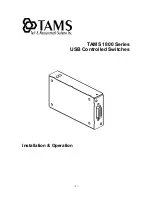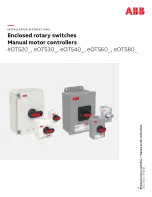
132
|
Interfaces
www.dell.com | support.dell.com
group
Group two LAGs in a supergroup (“fate-sharing group” or “failover group”).
Syntax
group
group_number
port-channel
number
port-channel
number
To remove an existing LAG supergroup, use the
no group
group_number
command.
Parameters
Defaults
none
Command Modes
PORT-CHANNEL FAILOVER-GROUP (conf-po-failover-grp)
Command
History
Example
Figure 11-2. group Command Example
Related
Commands
interface range
This command permits configuration of a range of interfaces to which subsequent commands are
applied (bulk configuration). Using the
interface range
command, you can enter identical commands
for a range of interface.
Syntax
interface range
interface
,
interface
,.
..
Parameters
Defaults
none
Command Modes
CONFIGURATION
group_number
Enter an integer from 1 to 32 that will uniquely identify this LAG
fate-sharing group.
port-channel
number
Enter the keyword
port-channel
followed by an existing LAG
number
.
Enter this keyword/variable combination twice, identifying the two LAGs to
be paired.
Version 8.3.17.0
Supported on M I/O Aggregator
FTOS(conf)#port-channel failover-group
FTOS(conf-po-failover-grp)#group 1 port-channel 1 port-channel 2
FTOS(conf-po-failover-grp)#
show interfaces port-channel
Displays information on configured Port Channel groups.
interface
,
interface
,.
..
Enter the keyword
interface range
and one of the interfaces — slot/port,
port-channel or VLAN number. Select the range of interfaces for bulk configuration.
You can enter up to six comma separated ranges—spaces are
not
required between the
commas. Comma-separated ranges can include VLANs, port-channels and physical
interfaces.
Slot/Port information must contain a space before and after the dash. For example,
interface range tengigabitethernet 0/1 - 5
is valid;
interface range
tengigabitethernet 0/1-5
is not valid.
•
For a 10-Gigabit Ethernet interface, enter the keyword
TenGigabitEthernet
followed by the slot/port information.
•
For a VLAN, enter the keyword
vlan
followed by a number from 1 to 4094.
Summary of Contents for PowerEdge M IO Aggregator
Page 14: ...12 Before You Start w w w d e l l c o m s u p p o r t d e l l c o m ...
Page 40: ...38 File Management w w w d e l l c o m s u p p o r t d e l l c o m ...
Page 80: ...78 Control and Monitoring w w w d e l l c o m s u p p o r t d e l l c o m ...
Page 90: ...88 u Boot w w w d e l l c o m s u p p o r t d e l l c o m ...
Page 108: ...106 Data Center Bridging w w w d e l l c o m s u p p o r t d e l l c o m ...
Page 114: ...112 Dynamic Host Configuration Protocol DHCP w w w d e l l c o m s u p p o r t d e l l c o m ...
Page 128: ...126 Internet Group Management Protocol IGMP w w w d e l l c o m s u p p o r t d e l l c o m ...
Page 162: ...160 Interfaces w w w d e l l c o m s u p p o r t d e l l c o m ...
Page 178: ...176 IPv4 Routing w w w d e l l c o m s u p p o r t d e l l c o m ...
Page 182: ...180 iSCSI Optimization w w w d e l l c o m s u p p o r t d e l l c o m ...
Page 186: ...184 Link Aggregation Control Protocol LACP w w w d e l l c o m s u p p o r t d e l l c o m ...
Page 190: ...188 Layer 2 w w w d e l l c o m s u p p o r t d e l l c o m ...
Page 210: ...208 Security w w w d e l l c o m s u p p o r t d e l l c o m ...
Page 246: ...244 Uplink Failure Detection UFD w w w d e l l c o m s u p p o r t d e l l c o m ...
Page 262: ...260 Debugging and Diagnostics w w w d e l l c o m s u p p o r t d e l l c o m ...
















































